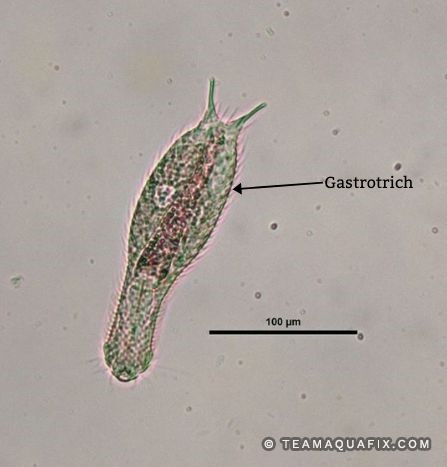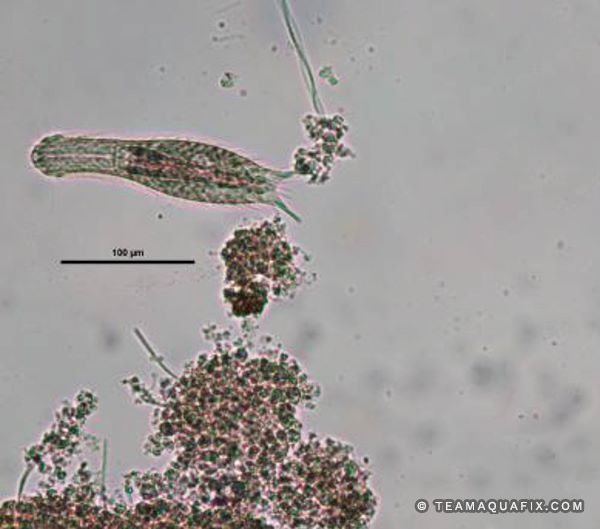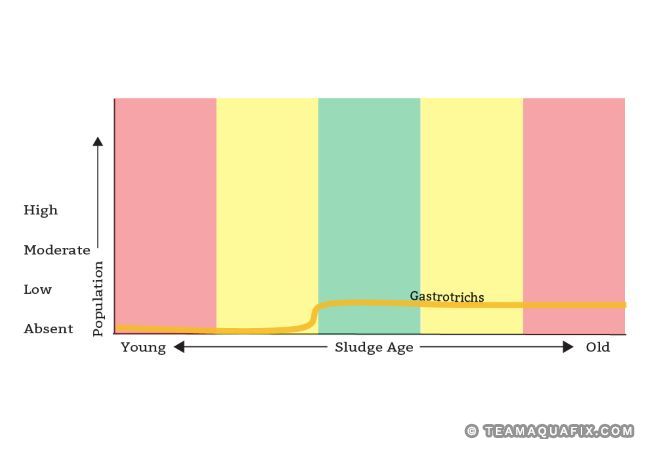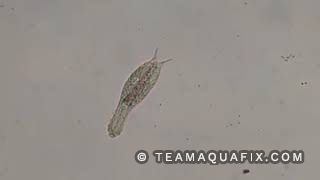Gastrotrichs
Identification
- Measure between 50-800 µm
- Generally colorless
- Covered in hair-like cilia
- Digestive tract is visible
- Have two prong adhesive tubes on their posterior
Why Do I have It?
- Seen in the autumn due to their life cycle
- Can be present in any type of plant condition
Associated Plant Conditions
Gastrotrichs are relatively rare organisms that can be found in all wastewater plant conditions with moderately aged sludge.
Treatment
If you are concerned about your plant conditions contact a technical rep for information and recommendations.
Under the Microscope and in Your Plant
Gastrotrichs are a type of metazoan that ranges from 50-800 µm long and can be identified under 100x magnification. Gastrotrichs are colorless with cilia attached to their head. They have adhesive tubes on their posterior end that helps them temporarily attach to surfaces. Typically, gastrotrichs are predominant in the autumn, however the exact reason for this is unknown. Their abundance does not indicate any specific plant conditions. Their average life cycle is between 3 to 21 days long. Newly hatched gastrotrichs are about two-thirds the length of an adult and are genetically identical to their mother.
Interesting Facts
- Older gastrotrichs become hermaphrodites and grow both sperm sacs as well as develop sexual eggs
- Living gastrotrichs are too active for detailed observation, so scientists have slowed them down using cocaine
References
Ecology and classification of north American freshwater invertebrates (pp. 163-172). Elsevier Science
Wright, J. (2014). Gastrotricha, Animal Diversity Web. Retrieved from
https://animaldiversity.org/accounts/Gastrotricha/




